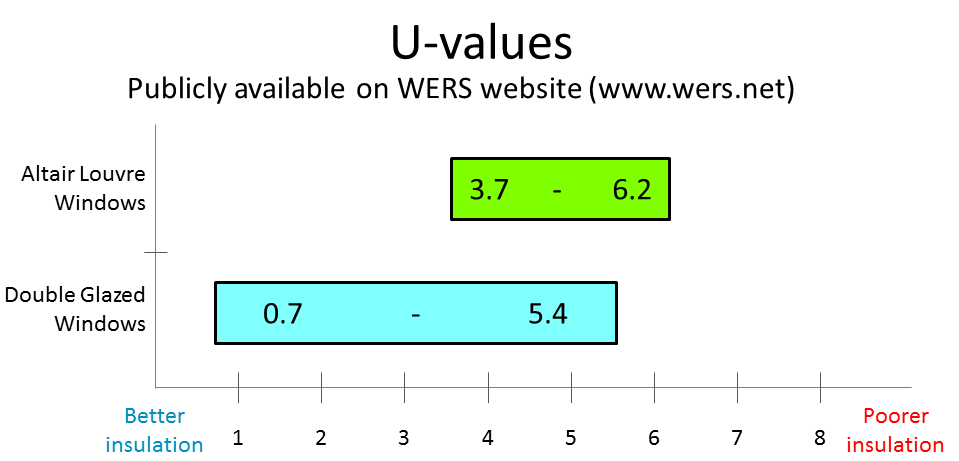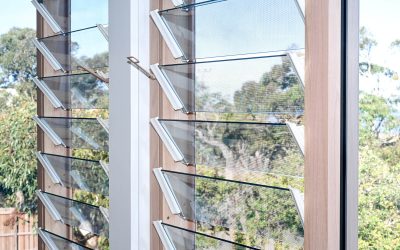“For every complex problem there is an answer that is clear, simple, and wrong.”
– H. L. Mencken (1880-1956)
The energy efficiency of a building is influenced by many different design aspects. Orientation, insulation, ventilation, shading, sealing and building size are all important, and all interact with each other. In the face of this complexity, double glazed windows are often touted as a key ingredient of energy efficient buildings. Double glazing salesmen weave stories about unbeatable thermal insulation and improved efficiency of heating and cooling systems with noise attenuation thrown in as an added bonus. In the face of relentless promotion of double glazed windows as the answer to all energy efficiency needs, it is little wonder that a number of myths have emerged.
Myth 1: Double Glazing is Required By The Building Code
The Building Code of Australia contains requirements to ensure a reasonable level of energy efficiency and a fair proportion of these requirements relate to windows. Importantly though, the requirements relate to the performance and usage of the windows, not to the type or design.
The Building Code may, therefore, require a specific window to meet or exceed specific performance levels, but does not dictate how that performance level must be achieved. There are a range of options available to window designers to change the performance of a window including window type, glazing thickness, glazing coatings, double glazing, framing materials and thermal breaks within the framing.

Myth 2: Double Glazing Gives Better Thermal Insulation Than Single Glazing
The energy efficiency characteristics of Australian window systems are modelled to international standards and are publicly available on the Window Energy Rating Scheme (WERS) website www.wers.net
WERS contains ratings of around 3,000 window systems and is the recognised source for energy efficiency characteristics of Australian window systems.
The rate of non solar heat loss or gain through a window is measured on a whole-of-window basis (framing and glazing combined) and is measured by the U-value. A lower U-value indicates that the window has a greater resistance to heat flow and offers better insulation.
A review of aluminium-framed window ratings available from the WERS website shows that although double glazed windows can have very low (better) U-values, there is a wide range of performance. When compared to aluminium-framed Altair Louvre Windows it is clear that many double glazed windows actually have higher (worse) U-values than some configurations of single-glazed Altair Louvre Windows.

Myth 3: Double Glazing Always Improves The Energy Efficiency Of A Building
If a building was to be sealed up tightly and the air conditioning system run 24 hours per day and 7 days per week, then the better insulation of double glazed windows* might make this myth true. But its rare to find people who want to live like this. Given the choice, most people prefer to open their windows and doors and enjoy fresh, natural breezes and a connection to the world outside. At identical sizes, Altair Louvre Windows deliver significantly more cooling, natural ventilation than any double glazed window. With more cooling ventilation, there is less need to run airconditioning systems and an air conditioner that is rarely used will consume significantly less total energy than an airconditioner than runs at its maximum efficiency, but is seldom turned off.
*While it is true that windows with lower (better) U-values will help improve the energy efficiency of a building, it is not true that double glazed windows always have lower (better) U-values than single glazed windows. (See Myth 2)

Myth 4: Double Glazing Is More Environmentally Friendly Than Single Glazing
While some (but not all) double glazed windows may improve the energy efficiency of a building, there are a number of other aspects of environmental friendliness where single glazed windows outperform double glazed windows:
- 1. Raw material usage and embodied energy.
By definition, double glazed windows have 2 panes of glass so require more total glass to manufacture. The spacers that hold the 2 panes of glass apart also require raw materials that would not be used for single glazed windows. Larger quantities of energy are required to produce larger quantities of raw materials. - 2. Transport efficiencies.
Double glazed windows are heavier than single glazed windows. Specialised machinery is therefore often required to handle double glazed windows and more energy is required to transport double glazed windows from the window fabricator to the building site.
Make an educated decision
In some circumstances double glazed windows may be the best option to achieve energy efficiency but don’t accept the simplified sales pitch that double glazed windows will meet all your energy efficiency needs – be sure to consider all the other factors that contribute towards naturally comfortable buildings. Make an educated decision.





